
Energy Stores
Energy is neither created nor destroyed, it instead gets transferred between energy stores. When energy is transferred to an object, it is stored in that objects energy store.
Energy stores can be any of the following: thermal, chemical, kinetic, magnetic, gravitational potential, electrostatic, elastic potential and finally nuclear.
Energy is transferred between energy stores, by any of the following: mechanically (by a force doing work), electrically (by moving charger), heating, radiation (light, sound etc).
Energy is transferred when a system (an object) changes.
Neither matter nor energy can enter or leave in a closed system. The net change in total energy is always zero in a closed system.
Work Done
Another way of saying ‘energy transferred’ is ‘work done’.
An example of work being done, is when a current flows through a circuit. Another example is when a person throws a ball into the air. The work being done is by the arm, and energy is being transferred is from chemical energy store, in the persons arm, to kinetic energy store, of the ball and arm. Another example is when a car crashes into a something. Energy is transferred from the cars kinetic energy store, to the elastic potential and thermal energy stores of the cars body, in addition to some energy being transferred as sound waves.
As a ball falls from a height, the gravitational force does the work. As it falls, energy is transferred from the objects gravitational potential energy (g.p.e), to the kinetic energy store. The energy that is lost from g.p.e store is equal to the energy gained in the kinetic energy store (assuming there is no air resistance). Air resistance would cause some energy to be transferred to the thermal energy store of the surrounding air.
Kinetic and Potential Energy Stores
Any object that moves, has a kinetic energy store. It increases, when an object accelerates, and decreases, when an object slows down. Energy is transferred to this store when the speed increases, and away from this store when it slows down.
Kinetic energy can be worked out mathematically with the following equation:
kinetic energy = 0.5 × mass × speed2
Ek = 1/2mv2
Where EK stands for Kinetic energy (j), ‘m’ stands for mass (in Kg), and ‘v’ stands for velocity (m/s2).
For example, a car that has a mass of 1500kg is travelling at 50m/s. What is its kinetic energy store? So using the equation above:
0.5 x 1500 x 302 = 675,000 j
The following equation is used to find the g.p.e of an object:
g.p.e = mass × gravitational field strength × height
Ep = mgh
Where Ep is g.p.e (j), m is mass (kg), g is gravitational field strength (N/kg), and h is height (m).
The elastic potential energy store, can be altered, by stretching or squashing an object. To find the elastic potential energy of an object, use this formula:
elastic potential energy = 0.5 × spring constant × extension2
Ee = 1/2Ke2
Where Ee is the elastic potential (j), K is the spring constant (N/m), and e2 is the extension (m).
Specific Heat Capacity
How hard it is to heat something up, is its heat capacity. Heat capacity varies depending on what object you are heating up.
The specific heat capacity of a substance, is the amount of energy required to raise the temperature of one kilogram of the substance, by one degree Celsius.
The following equation is used to find the heat capacity of a substance:
change in thermal energy = mass × specific heat capacity × temperature change
∆ E = m c ∆ θ
Where ∆ E is the change in thermal energy (j), c is the specific heat capacity (j/kg °C), m is the mass (kg), and ∆ θ is the temperature change (°C).
An example of an exam question on the topic could be:
How much energy is needed to heat 3kg of water from 20°C to 100°C? The specific heat capacity of water is 4200 j/kg°C.
First find the temperature change ∆ θ:
100 – 20 = 80°C
Now substitute this value, along with the values for mass, and specific heat capacity into the formula:
3 x 4200 x 80 = 1,008,000 j
If you are not working out the energy you will have to rearrange the formula using this equation bellow:

To use it, cover up the bit you need to work out, and write down what’s left.
Investigating Specific Heat Capacity - Practical
Specific heat capacity can be investigated through practical investigation.
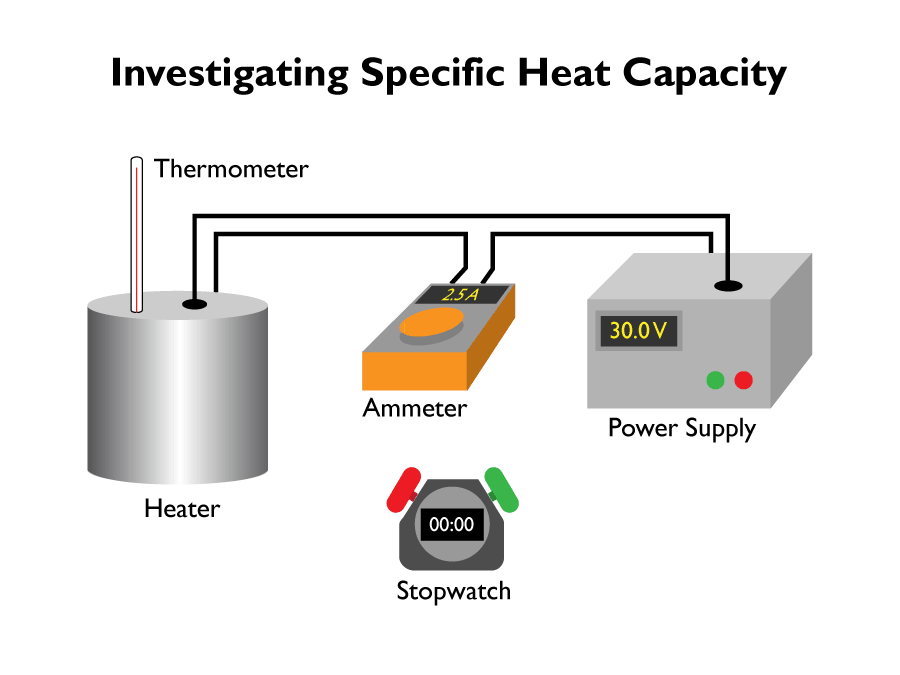
- Firstly you will need a block of the object you want to test. It also needs two holes in it, one for the thermometer, and another one for the heater.
- Weigh the block, then insert the thermometer and the heater as shown in the diagram.
- Measure the temperature of the block and set the potential difference of the power supply to be 10v. Turn on the power supply and start the stop watch.
- As the block heats up electrical energy is transferred from the power supply to the heaters thermal energy store. It is then transferred to the blocks thermal energy store by heating.
- Record the temperature every minute.
- When you have collected 10 or more readings turn off the power supply.
Now you have to find the specific heat capacity.
you can calculate the power supplied to the heater using the following formula:
P = VI
Then using this formula:
E = Pt
You can calculate how much energy has been transferred to the heater.
- Assuming all the energy supplied to the heater has transferred to the block, you can plot a graph of the energy transferred to the thermal energy store of the block against the temperature. Then find the gradient of the straight part of the graph. This is ∆ 0 / ∆ E.
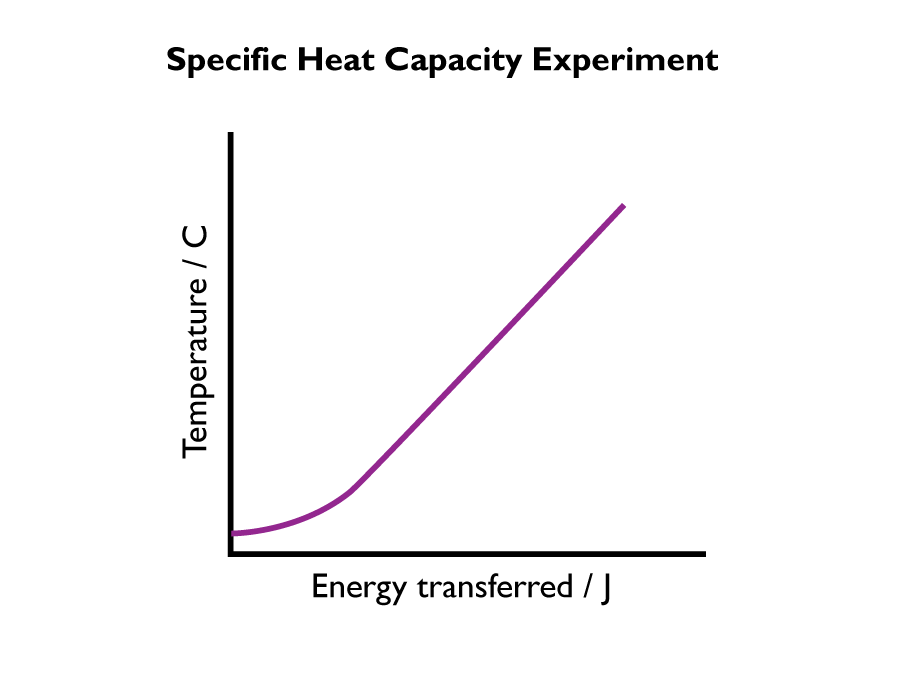
- Finally, use the formula ∆ E = m c ∆ θ to find the specific heat capacity of the block.
Conservation of Energy and Power
The law of conservation of energy states that “energy can neither be created nor destroyed”. Instead, energy can only be transferred, from one store to another.
Energy is not always transferred usefully. It is often dissipated. For example, in an open system, energy and matter can be exchanged with its surroundings. For example, when heating some water on a stove, heat will be wasted to the surroundings. Not all energy will be transferred, usefully, to the water.
In a closed system, more of the energy is being used usefully. For example, assume that a flask is a perfect insulator of heat. Energy does not leave the system. There is no net change to the total amount of energy.
Power
Power is defined as the rate at which energy is transferred or the rate at which work is done. So the more powerful a device is, the more energy it will transfer each second.
Power can be calculated using the following equations:
P = E/t
Where p is power (W), E is energy transferred (J), and t is time (s).
P = W/t
Where p is power (W), W is work done (J), and t is time (s).
Example. Two electric motors are used to lift a 10 N weight a height of 20m. Motor one does this in 10 seconds. Motor two does it in 20 seconds.
Work done = force x distance
so, for both motors:
10 x 20 = 200 J
power = work done / time
for motor one:
200 / 10 = 20 W
for motor two:
200 / 20 = 10 W
Motor one is therefore, twice as powerful as motor two.
Conduction
Conduction happens most often in solids. When a solid is heated, energy is transferred to the thermal store of the object. The particles vibrate, and collide with one another, in turn passing kinetic forces onto inactive, neighbouring particles. This process continues until it reaches the other side of the object, where energy is lost to the thermal store of the environment.
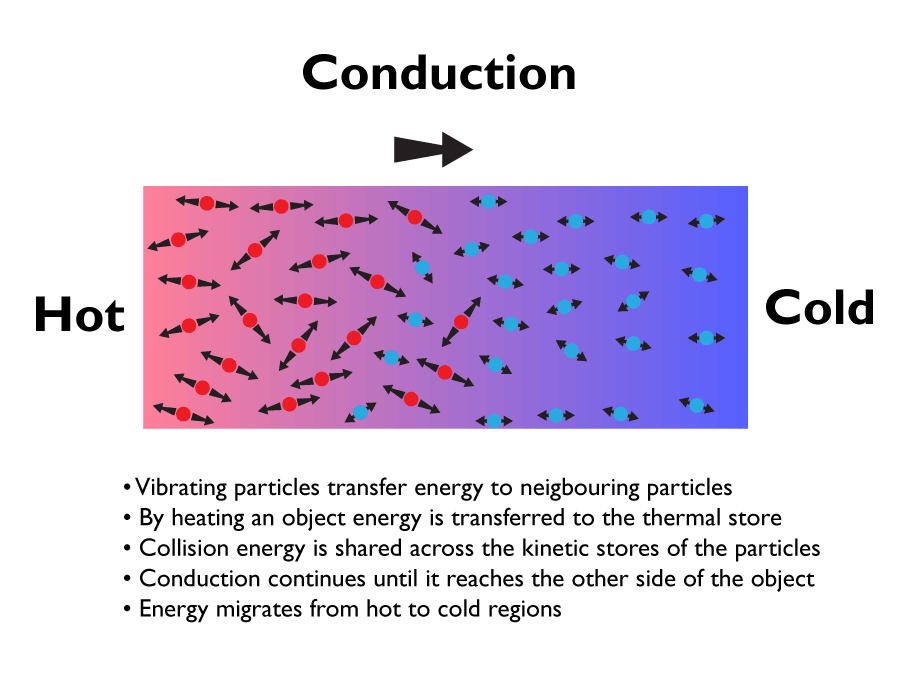
How quickly energy migrates through a material in this way, is its thermal conductivity. Good conductors of energy tend to be dense materials. This is because their particles are closer together, and will therefore pass energy between there kinetic stores easier. Which is why water is a better conductor of energy than air.
Convection
Heat energy can be transferred in liquids or gases by convection. In convection, energised particles move from hot to cold regions. When a liquid or gas is heated, the space between the particles increases, which in turn causes the density of the region to decrease. Energy is transferred from heating to the thermal store of the liquid or gas. In liquids or gases, particles are able to move freely. This energy is shared across the kinetic energy stores.
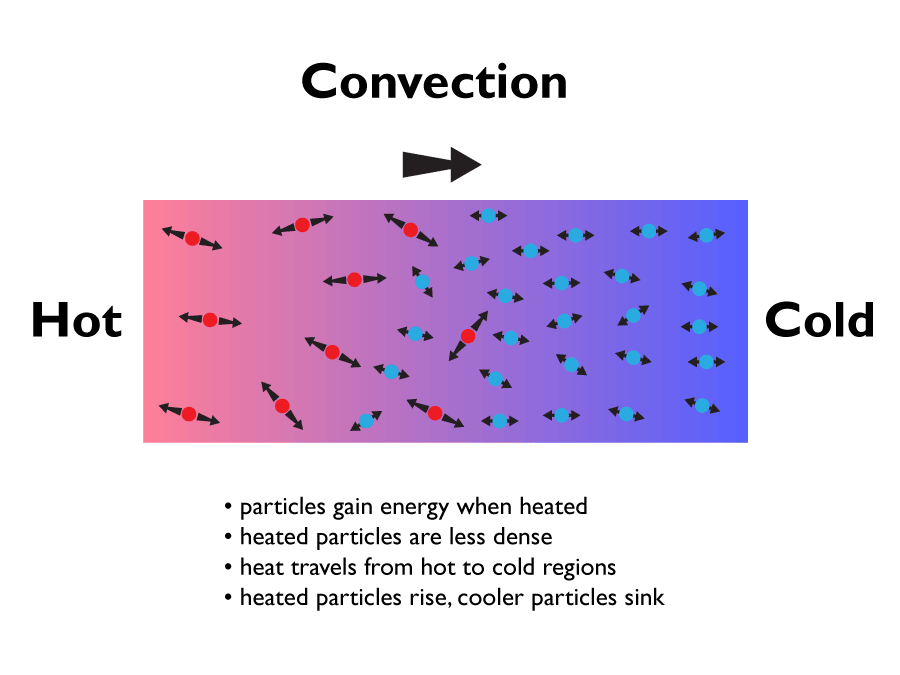
Reducing Unwanted Energy Transfers
Lubrication is one way to prevent energy being dissipated to thermal stores. Lubrication does this by reducing frictional forces.
Air resistance can cause energy to be transferred from kinetic to thermal energy stores. Streamlining an object, helps to reduce energy being dissipated to thermal stores.
You can reduce the rate of energy transfer by using insulation. Insulation is used extensively in households to reduce the loss of thermal energy stores.
Using thermal insulation that has a low thermal conductivity, is one way houses stop thermal energy being lost.
You can insulate your household in the following ways:
- Cavity wall insulation
- Loft insulation
- double-triple glazed windows
- draught excluders
Having the above, is essential for saving money on energy bills. It is also better for the environment.
Efficiency
Devices are often designed to be as efficient as possible. This means, as much of the input energy should be transferred into useful energy stores, as possible.
The energy supplied to a device, which is transferred into a useful form, is the efficiency of a device.
A device is useful if it can transfer energy from one store to another with as little energy dissipated into a useless form as possible.
The less energy a device wastes into an unusable form, the more efficient it is said to be.
The efficiency of a device can be calculated using the formulas bellow:
Efficiency = Useful output energy transfer / Total input energy transferPercentage efficiency = efficiency x 100
You can also calculate the efficiency of a device, using the ‘useful power output’ divided by the ‘total power input’:
Efficiency = Useful power output / Total power input
Devices usually lose energy in the form of useless thermal store. Electric heaters on the other hand are 100% efficient, since their thermal energy store is useful.
Energy Resources and their Uses
Energy resources, are either renewable or non-renewable. Non-renewable resources will run out at some point. Renewable resources will last for ever.
Fossil fuels and nuclear fuels are all said to be non-renewable. They have taken millions of years to form underground. These resources are reliable at this moment in time. They will eventually run out though. They all cause damage to the environment.
Renewable resources cause some damage to the environment, but it is far less than non-renewable resources. They are often less reliable than non-renewables, since they depend on the weather for example.
| Energy resource | Energy store | Renewable? | Uses | Power output | Environmental impact |
|---|---|---|---|---|---|
| Fossil fuels (oil, coal and natural gases) | Chemical | Non-renewable | Transport, heating, electricity generation | High | Releases CO2 (causes global warming) |
| Nuclear fuels | Nuclear | Non-renewable | Electricity generation | Very high | Radioactive waste (needs to be disposed of safely) |
| Bio-fuel | Chemical | Renewable | Transport, heating, electricity generation | Medium | 'Carbon neutral', so low impact |
| Wind | Kinetic | Renewable | Electricity generation | Very low | Takes up large areas that could be used for farming, some people say windmills spoil the view |
| Hydroelectricity | Gravitational potential | Renewable | Electricity generation | Medium | Local habitats are affected by the large areas that need to be flooded to build dams |
| Geothermal | Internal (thermal) | Renewable | Electricity generation, heating | Medium | Very low |
| Tides | Kinetic | Renewable | Electricity generation | Potentially very high, but hard to harness | Tidal barrages can block sewage which needs to go out to sea |
| Sun | Nuclear | Renewable | Electricity generation, heating | Dependent on the weather and only available during daylight | Very little |
| Water waves | Kinetic | Renewable | Electricity generation | Low | Very low |
Fossil fuel, and nuclear power stations, are in production more or less 24hrs a day, seven days a week. They are therefore very reliable. This is mainly because they are not dependant on the weather, like many renewable forms of power are. The impact they have on the environment though, is large.
Nuclear power stations are relatively cheap to run, and they can output lots of electricity at high demand. However, the power stations themselves are expensive to build and decommission. The waste they produce is also radioactive, and therefore expensive and difficult to process.
Renewable power has no fuel cost, and has a low impact on the environment. However, renewable power tends to be unreliable, since it depends a lot on the weather. Water power, eg tidal and hydroelectricity is reliable, however, the amount of electricity produced by these methods is relatively low.
Wind Power
Wind and solar power are renewable forms of energy that wont run out. They are however, dependant on the weather being sunny and windy.
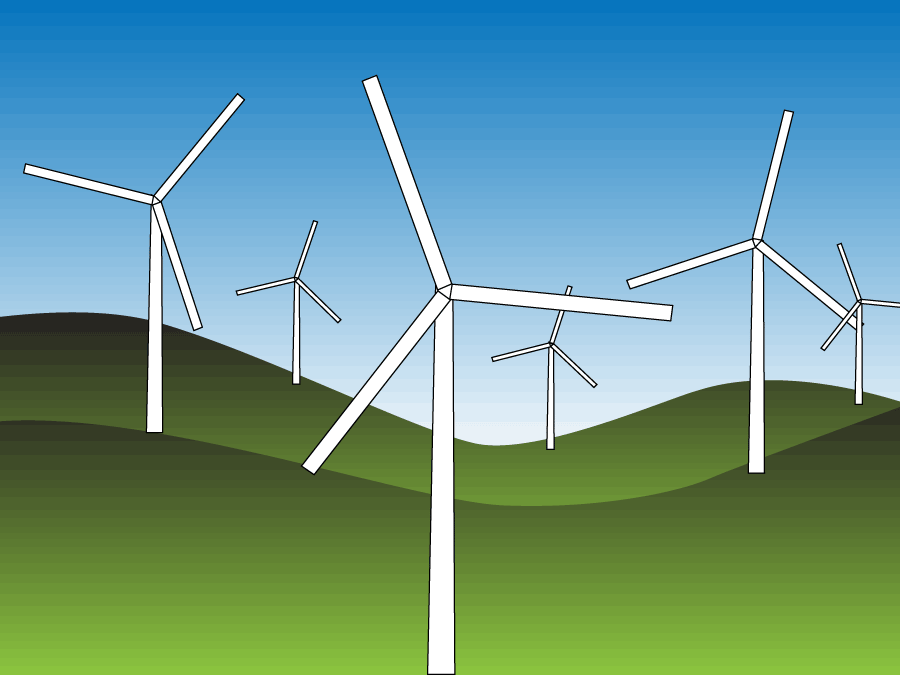
Wind power uses a large wind mill, attached to a turbine, that generates the electricity when the blades turn. They are generally located in remote places, like on a hill, or out at sea. This is so there are no man-made, or non man-made, structures in the way of the wind.
There is little pollution with this method, other than in the initial manufacturing process. There is some noise pollution which tends to annoy the local population a little. What damage there is to the environment isn’t permanent though. The wind turbines can always be removed, returning the landscape back to normal.
One of the biggest downsides to this method, is that you need 1500 wind turbines to equal the output of one coal-fired power station. This makes them a bit of an eye-sore, depending on who you ask. Another downside is the initial cost of the turbines, which can be very high. However, there are no fuel costs, and operational costs are relatively low.
Another downside is that you don’t always have enough wind to turn the blades. On average there is enough wind to turn the turbines 70-85% of the time.
Solar Power
Solar cells are good for charging electrical items that don’t require much energy.
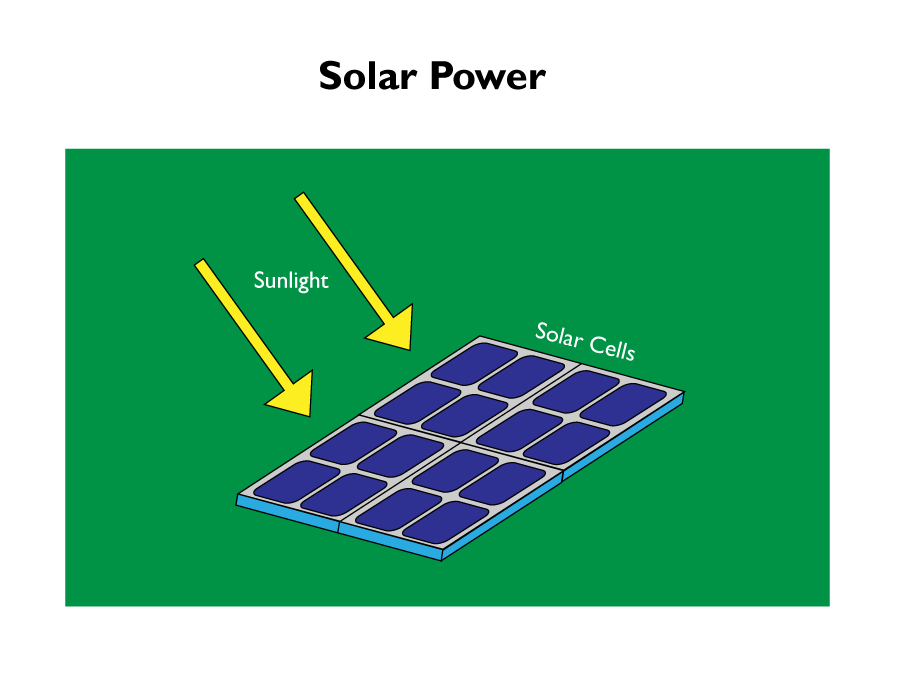
There is very little pollution connected with using solar cells, only from their manufacture.
In countries where there is a lot of sun, solar cells are a reliable way of producing energy. However, at night time, energy production stops.
When demand for electricity is high, you cannot increase the amount of energy produced. It comes in fixed amounts.
The initial costs of solar cells are high, but as soon as that cost has been paid, running costs are low since there is no fuel cost.
Geothermal
Geothermal energy uses underground energy stores to generate heat. It is only possible in volcanic areas where hot rocks are within 3km from the surface. The source of energy is the slow decaying of uranium, and other radioactive elements, inside rocks.

It is a very reliable source of energy, but there aren’t that many suitable locations for a plant. The cost of building a power plant is high as well. But the environmental cost is low.
Hydro-electric Power
Hydro-electric power gains energy from the kinetic store of falling water. It usually requires the production of a dam to collect rain water. The water is held back by the dam and then released into turbines which generate electricity from the waters kinetic energy. There is no pollution with this method, but there is a big effect on the environment. This is because the dams construction requires the flooding of a valley, which has an effect on the wildlife due to loss of habitat. The reservoirs also look very unsightly when they dry up as well.
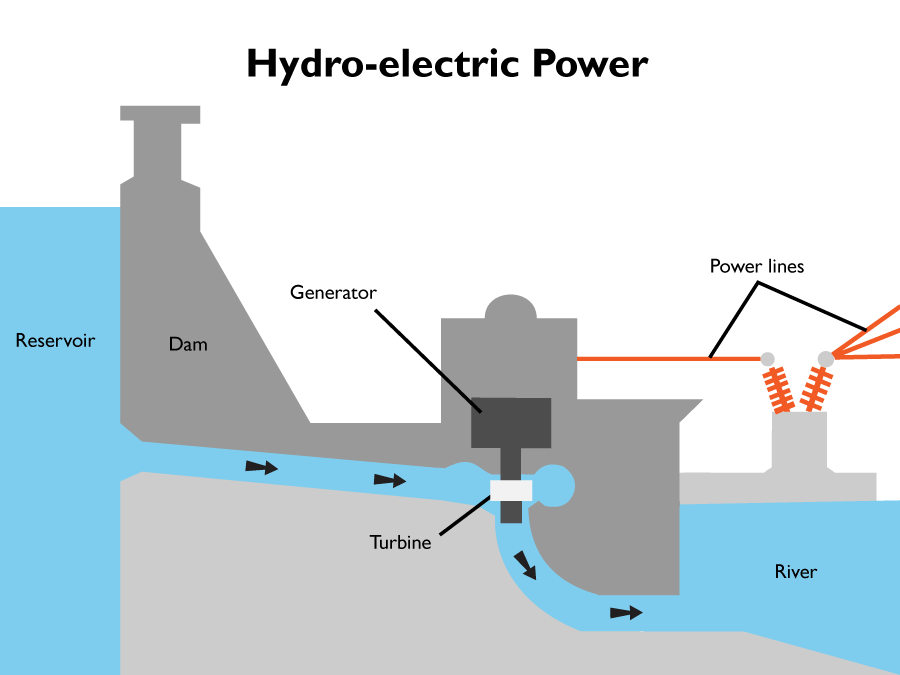
Hydro electric power is a good method of generating electricity, it can even cope with increase in demand since it doesn’t rely on the weather like some other methods do.
Wave Power
Wave power is the capture of energy from wind waves for useful work, like electricity generation.
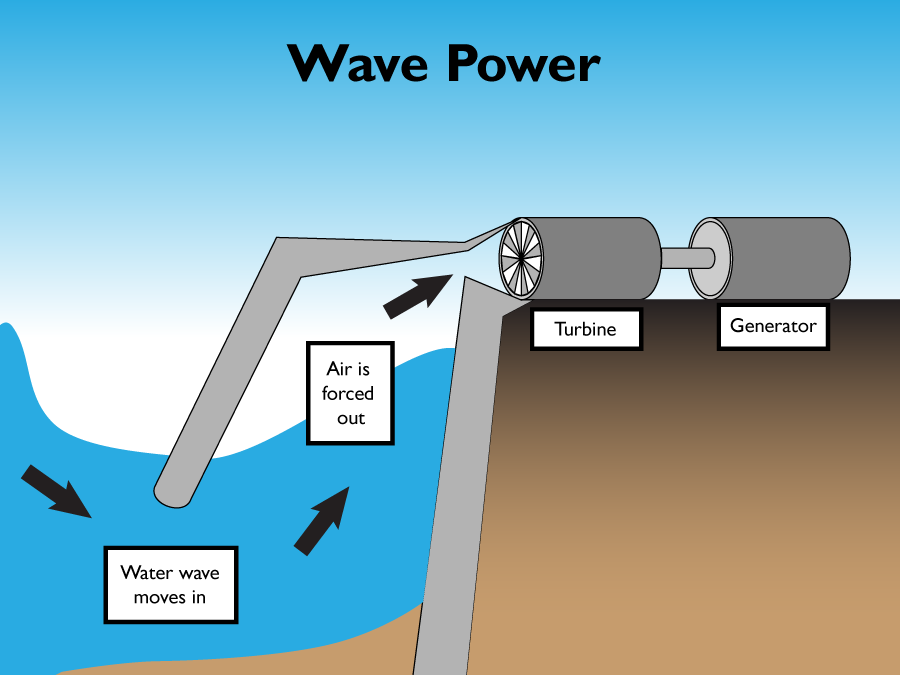
To achieve this, lots of wave powered turbines and generators are located around the coast that take advantage of the seas waves. Waves are often formed by the wind, so this type of energy is unreliable, since it isn’t always windy.
As with a lot of renewable forms of energy; the initial cost is high, but there is no fuel cost and minimal running costs, so overall it isn’t a bad way of generating electricity.
Perhaps the biggest downside to this method is the relatively small amount of electricity it can produce. Also the destructive nature this method has on the sea habitat.
Tidal Barrages
A tidal barrage uses the sun and the moons gravitational pull on the tide to generate electricity.
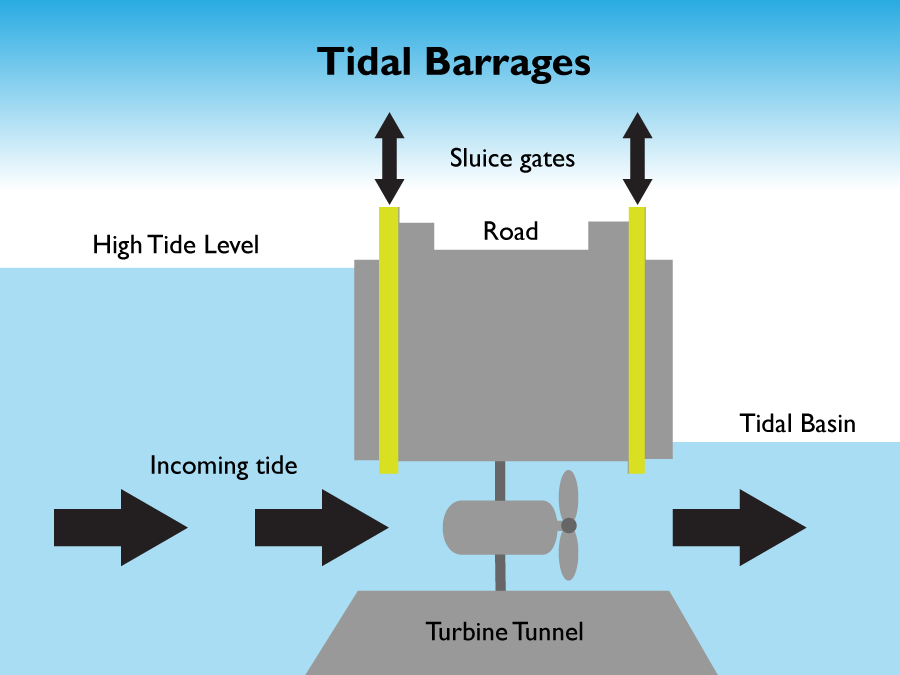
It consists of a large dam build across a tidal river estuary. It holds back the tide and then releases it. The force of which is passed through a turbine, then a generator, to generate electricity.
A tidal barrage is a reliable way of generating electricity. The main problem is that the tide only occurs twice a day, so the opportunity to generate electricity is low.
Another problem with tidal barrages is that they prevent boats from passing down the river. They also alter the habitat for wildlife, such as fish, or wading birds.
Once they have been built, there is no additional pollution caused. The initial financial cost is reasonably high, but like most renewable methods, there is no fuel costs, and minimal running costs to this method.
Bio Fuels
Bio fuels are renewable fuels made from plant matter, and manure. They can be made from plants or domestic, industrial or agricultural bio waste. They can be a solid, liquid or gas. They can be used in transportation, heating systems, or burnt to produce electricity, in a similar way to fossil fuels.
Producing electricity from bio fuels is reliable, in that it can be done 24hrs a day, 7 days a week, this is unlike other renewable forms of energy that often rely on the weather. The crops bio fuels depend on can be grown all year round, and can be stored for when need is great.
Bio fuels are supposed to be carbon neutral. There is some debate as to whether this is true or not.
The cost of refining bio fuels is very high. There is also an environmental cost, since large areas of land has to be cleared to produce the crops needed for production. Also, some people worry that there wont be enough land for growing food on.
Non-Renewable Resources
A non-renewable resource is commonly a fossil fuel, that is; a carbon containing compound, formed from the buried remains of dead organisms, over the course of millions of years. It can also be a radioactive compound eg. uranium, found in the rocks of certain parts of the earths crust. What unites all non-renewable forms of energy, is their finite nature. The main reason for using non-renewable fuels, is that they are very reliable. Power plants can respond quickly to changes in demand, since fuel is always in stock. Also, minus the initial cost of opening a power station and fuel costs, fossil fuels have become a pretty cost effective way of generating electricity. They also make great fuels for transportation and heating, that are relatively cheap, in comparison to some greener solutions.
These types of fuel are eventually going to run out though. It is predicted that fossil fuels will run out in the next 100 years if nothing is done to reduce our dependency on them.
Unfortunately, renewable resources don’t currently meet our requirements for electricity. It is a shame, since there are lots of negative aspects to using non-renewable fuel.
The worst aspect to using non-renewable fuels, is the huge impact they have on the environment.
The burning of fossil fuels leads to the release of greenhouse gases such as carbon dioxide. This then leads to global warming, which has an effect on global average temperatures. Burning coal releases sulfur dioxide which causes acid rain, which has a negative effect on the ecosystem. Habitat loss due to the mining of coal and oil is not insignificant. Oil spillages, have an effect on birds and aquatic life.
Nuclear power is a cleaner source of power, but also comes with its problems. Nuclear waste remains radioactive for years after it is disposed of. Nuclear power plants carry the risk of major accidents, like the Fukushima disaster.
Trends in Energy Resource Use
The long term goal is to increase the usage of renewable sources of energy, and reduce our dependency on non-renewable fuels.
Governments, have come to the realization that it is better to learn to live with renewable resources, whilst there is still some non-renewable resources left.
Governments across the world have set targets to reduce non-renewable usage. This puts pressure on energy providers and other manufactures to reduce their carbon footprint.
Car companies have started to manufacture electric and hybrid vehicles, in response to targets, and the increase in public understanding around environmental issues.
Issues towards becoming Carbon Neutral
There’s lots of scientific evidence that supports global warming and the greenhouse effect. But scientists do not have the power to force people, governments, or companies, to change their behavior.
There exists large costs towards becoming carbon neutral. The financial burden is unclear. But it seems as though governments are going to contribute somewhat to the cause, in addition to manufactures, and consumers.
Even if the funding for power plants is there, there still exists the problem as to where to put these plants. For example, a wind farm takes up a lot of space, and no one seems to want one close to them. The same applies to any other form of renewable power.
From a personal perspective, going environmentally friendly can cost a lot of money. Electric cars, for example, are much more expensive than equivalent petrol cars. And solar panels for your home cost a lot of money as well.
Some forms of renewable energy are not as reliable as non-renewable energy. This means either having a combination of renewable and non-renewable power, or researching new ways of using renewable resources. Either way the financial cost to this research is high.